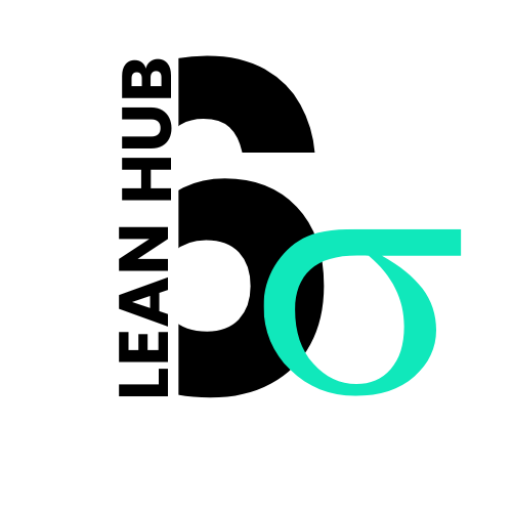Improving Processes with Value Stream Mapping
Value Stream Mapping (VSM) is a powerful visual tool used in Lean management to analyze and design the flow of materials and information required to bring a product or service to a consumer.
Originating from the Toyota Production System, VSM provides organizations with a clear picture of their processes, enabling them to identify areas for improvement.
By mapping out the entire value stream, businesses can visualize how value is created and where waste occurs, ultimately leading to enhanced efficiency and customer satisfaction.
The essence of VSM lies in its ability to depict both the current state of operations and the desired future state. This dual perspective allows teams to pinpoint inefficiencies, redundancies, and bottlenecks that hinder performance. By engaging cross-functional teams in the mapping process, organizations foster collaboration and a shared understanding of workflows, which is crucial for driving meaningful change.
The ultimate goal of VSM is not just to eliminate waste but to create a streamlined process that maximizes value for customers while minimizing costs.
Key Takeaways
- Value Stream Mapping is a visual tool used to analyze and improve the flow of materials and information in a process.
- Understanding the current state involves mapping out the existing process, including all steps, delays, and handoffs.
- Identifying waste and inefficiencies is a key part of value stream mapping, including looking for overproduction, waiting, unnecessary transportation, and defects.
- Creating a future state map involves designing an improved process flow that eliminates waste and improves efficiency.
- Implementing changes and improvements requires buy-in from all stakeholders and a clear plan for execution.
Understanding the Current State
To effectively utilize Value Stream Mapping, it is essential first to understand the current state of operations. This involves gathering data on existing processes, workflows, and performance metrics. The current state map serves as a baseline that highlights how work flows through the system, including all steps involved in delivering a product or service.
It typically includes information such as cycle times, lead times, inventory levels, and the roles of various team members. Creating a current state map requires collaboration among various stakeholders who possess different perspectives on the process. For instance, production staff can provide insights into operational challenges, while sales teams can share customer feedback.
By incorporating diverse viewpoints, organizations can develop a comprehensive understanding of their processes. Additionally, tools such as process flow diagrams and swimlane charts can enhance the clarity of the current state map, making it easier to identify areas for improvement.
Identifying Waste and Inefficiencies
Once the current state has been mapped out, the next step is to identify waste and inefficiencies within the process. Lean principles categorize waste into several types, including overproduction, waiting time, transportation, excess inventory, unnecessary motion, defects, and underutilized talent. By scrutinizing each step in the value stream, organizations can pinpoint specific areas where these wastes occur.
For example, consider a manufacturing company that produces electronic components. Upon analyzing their current state map, they may discover that a significant amount of time is spent waiting for materials to arrive from suppliers. This waiting time not only delays production but also ties up resources that could be better utilized elsewhere.
By identifying such inefficiencies, organizations can prioritize which areas to address first based on their impact on overall performance and customer satisfaction.
Creating a Future State Map
| Metrics | Current State | Future State |
|---|---|---|
| Lead Time | 10 days | 5 days |
| Process Efficiency | 60% | 80% |
| Customer Satisfaction | 70% | 90% |
With a clear understanding of the current state and identified inefficiencies, organizations can begin to create a future state map that outlines an improved process. The future state map serves as a vision for what the organization aims to achieve after implementing changes. It should reflect streamlined workflows that eliminate waste while enhancing value delivery to customers.
Creating a future state map involves brainstorming potential solutions and improvements based on the insights gained from the current state analysis. For instance, if excessive waiting times were identified as a major issue, the future state map might incorporate strategies such as just-in-time inventory management or improved supplier relationships to ensure timely material delivery. Additionally, organizations may consider implementing automation or technology solutions that can enhance efficiency and reduce manual errors.
The future state map should be realistic yet ambitious, providing a clear target for teams to work towards.
Implementing Changes and Improvements
Transitioning from the current state to the future state requires careful planning and execution. Implementation involves not only making physical changes to processes but also fostering a culture of continuous improvement within the organization.
Engaging employees at all levels is crucial during this phase; their buy-in and participation can significantly influence the success of the changes.
One effective approach is to use pilot projects or small-scale trials to test proposed changes before full-scale implementation. For example, if a company decides to implement a new software system for tracking inventory, they might first roll it out in one department to assess its effectiveness and gather feedback. This iterative approach allows organizations to refine their strategies based on real-world results and minimizes disruption during the transition.
Measuring and Monitoring Progress
Establishing Key Performance Indicators (KPIs)
After implementing changes, it is vital to measure and monitor progress to ensure that improvements are being realized. Key performance indicators (KPIs) should be established based on the goals outlined in the future state map. These KPIs may include metrics such as cycle time reduction, increased throughput, improved quality rates, or enhanced customer satisfaction scores.
Regular Review and Assessment
Regularly reviewing these metrics allows organizations to assess whether they are on track to achieve their desired outcomes. Additionally, it provides an opportunity to identify any new challenges that may arise post-implementation.
Addressing New Challenges and Opportunities
For instance, if a company notices that while cycle times have improved, quality defects have increased, they can investigate further to understand the root cause and make necessary adjustments.
Sustaining Improvements
Sustaining improvements achieved through Value Stream Mapping requires ongoing commitment from leadership and employees alike. It is essential to embed a culture of continuous improvement within the organization so that teams remain vigilant in identifying new opportunities for enhancement. This can be achieved through regular training sessions, workshops, and team meetings focused on Lean principles and practices.
Moreover, organizations should establish feedback loops that encourage employees to share their insights and suggestions for further improvements. Recognizing and rewarding contributions from team members can also reinforce this culture of continuous improvement. For example, implementing a suggestion program where employees can submit ideas for process enhancements can lead to innovative solutions that may not have been considered otherwise.
Benefits of Value Stream Mapping
The benefits of Value Stream Mapping extend far beyond mere efficiency gains; they encompass enhanced customer satisfaction, improved employee engagement, and increased profitability. By providing a clear visual representation of processes, VSM enables organizations to make informed decisions about where to focus their improvement efforts. The collaborative nature of VSM fosters teamwork and communication across departments, breaking down silos that often hinder progress.
Furthermore, VSM equips organizations with a structured approach to problem-solving that encourages data-driven decision-making. As companies continue to navigate an increasingly competitive landscape, those that embrace Value Stream Mapping will find themselves better positioned to adapt and thrive in an ever-changing environment. Ultimately, VSM is not just a tool for operational excellence; it is a pathway toward creating lasting value for both customers and stakeholders alike.
FAQs
What is value stream mapping?
Value stream mapping is a lean management technique used to analyze and improve the flow of materials and information required to bring a product or service to a customer. It provides a visual representation of the entire process, allowing organizations to identify and eliminate waste and inefficiencies.
What are the benefits of value stream mapping?
Value stream mapping helps organizations identify and eliminate waste, reduce lead times, improve quality, and increase productivity. It also provides a common understanding of the current state of the process and helps in developing a future state map for improvement.
How is value stream mapping different from process mapping?
While process mapping focuses on individual steps within a process, value stream mapping looks at the entire flow of materials and information from the beginning to the end. It also emphasizes the value-added and non-value-added activities within the process.
What are the key components of value stream mapping?
The key components of value stream mapping include the identification of the value stream, mapping the current state, analyzing the current state, designing the future state, and creating an implementation plan for improvement.
Who can benefit from value stream mapping?
Value stream mapping can benefit any organization that wants to improve its processes, reduce waste, and increase efficiency. It is commonly used in manufacturing, healthcare, service industries, and other sectors to streamline operations and deliver greater value to customers.






